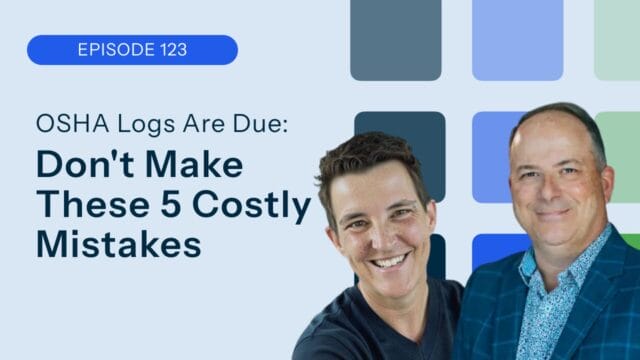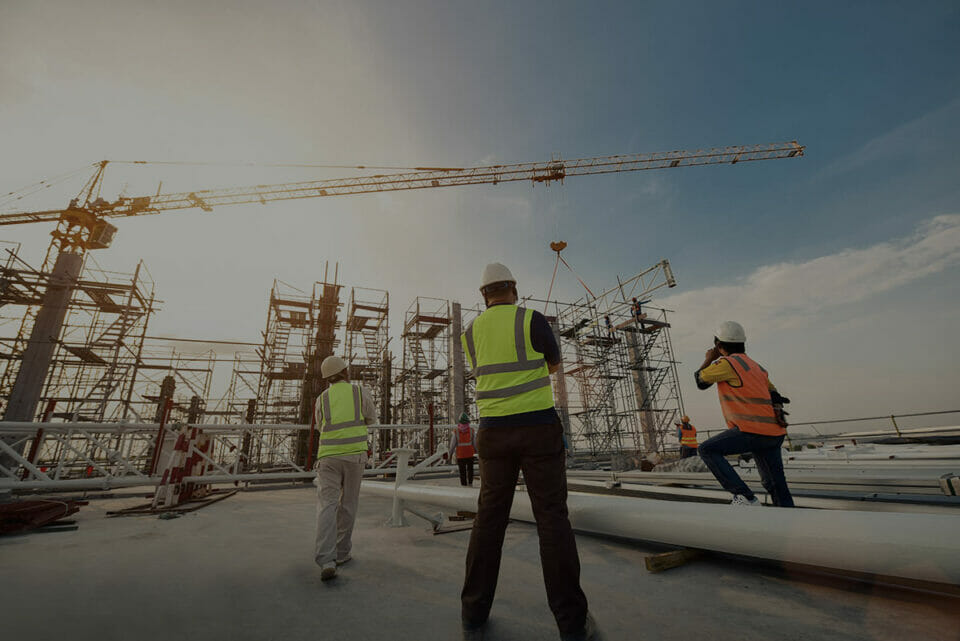
OSHA Logs Are Due: Don’t Make These 5 Costly Mistakes | Risk Matrix Episode 123
THE RISK MATRIX Cutting-edge podcast on occupational safety and risk management. Hosted by industry titans: JAMES JUNKIN, MS, CSP, MSP,…
Worker safety is paramount during onsite construction and repair. And maximizing that safety requires a hazard vulnerability analysis to identify and prevent potential risks.

The safety of employees, contractors, and third parties is paramount for every workplace undergoing construction and repair. And maximizing that safety requires a hazard vulnerability analysis to identify and prevent potential risks.
However, not all organizations establish the necessary procedures to conduct these analyses and build a more robust safety culture. This shortcoming is often the result of inexperience and a safety team needing more expertise.
This article briefly discusses the hazard vulnerability analysis concept and lists seven steps organizations should consider when developing such an assessment for their worksites.
A hazard vulnerability analysis helps safety teams identify and manage a worksite’s risks and vulnerabilities. This process is essential to worker safety because it allows management to design safety protocols and decision-making processes. These hazards can be natural or artificial, ranging from floods and earthquakes to structural collapses and equipment failures.
This assessment goes beyond just finding the potential dangers. It will also measure each hazard’s likelihood and potential impact on the project. They typically include a series of steps, which we discuss below.
Lastly, the process is iterative and requires regular updates and revisions to account for new dangers on the job site. This ensures the project’s risk management approaches remain robust and effective throughout its lifecycle.
First, safety personnel should perform a risk assessment of the working conditions and note any potential hazards. These concerns might include the following:
Open communication between safety assessors and management is critical for identifying hazards and preventing accidents.
Lastly, effectively identifying and removing these possible threats requires management to employ personnel with the necessary qualifications, knowledge, and observational abilities.
Next, safety teams should categorize these hazards and create a process for handling each type. The categories might include the following:
In designing a risk mitigation strategy, management must know which workers and third parties are most susceptible to specific hazards. These insights can help safety teams develop narrowly defined plans most appropriate for a given risk.
Management should focus on jobs that require specific skills and may pose higher risks for certain workers, which might include:
Additional considerations should include workers on the premises less often and during non-work hours. Safety assessments do not always 1nclude people who don’t come to work regularly or at normal times.
This workforce might include:
Safety personnel must consider all possible risks involving workers and third parties, no matter how challenging it may be.
Examining prior accidents can help safety personnel identify more subtle safety concerns inherent in relatively mundane activities. These might include (and as references above) the following:
Safety teams often spend the least time reviewing these daily tasks. However, every job at the workplace carries some degree of risk.
Lastly, safety teams should review near misses. While the workplace avoided an accident, any near miss is still an opportunity to revisit procedures and conduct additional training.
After finding dangers, safety teams must choose how to react to each one, following all rules and laws. They might begin this process by comparing proposed responses to the company’s best practices.
Management should check existing controls and compare them to the recommended new practices. This helps the organization analyze and find areas for improvement.
First, assessors should determine whether they can eliminate the risk and, if not, create the appropriate management steps. Potential solutions might include the following:
One of the last (and most critical) steps is documenting and discussing the hazard analysis findings internally.
Assessment teams should be as clear and concise as possible when recording outcomes. For example, a recorded outcome might read as follows:
“Risk of tripping over debris near the digging site. Provide additional trash bins, train workers on debris cleanup, remove debris weekly, conduct weekly inspections.”
The hazard should be properly and sufficiently analyzed and follow the steps mentioned. This will improve an existing safety plan or create a new one.
Workplaces change over time, creating new risk scenarios that might render the existing hazard analysis obsolete. As such, safety personnel should reevaluate their assessments periodically and document recent developments.
A hazard vulnerability analysis is vital to identifying and documenting potential risks in and around worksites. Minimizing those risks requires a qualified team of experts who can recognize possible scenarios and recommend suitable safety precautions based on the potential threat.
To reduce accidents and your responsibility for injuries, hire insured contractors who know safety practices and have proper training. Use a digital tool to check if your contractors follow the rules and regulations.
Contact us today to learn more.


THE RISK MATRIX Cutting-edge podcast on occupational safety and risk management. Hosted by industry titans: JAMES JUNKIN, MS, CSP, MSP,…

THE RISK MATRIX Cutting-edge podcast on occupational safety and risk management. Hosted by industry titans: JAMES JUNKIN, MS, CSP, MSP,…
We’ll send you practical and insightful supply chain risk management info that can benefit your business. Plus, important company updates that keep you in the loop.
